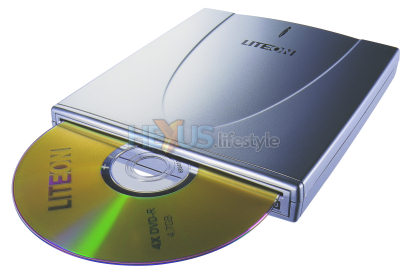Ticking the boxes
HEXUS: And what do you see for Lite-On in your crystal ball, what about set-top DVD recorders that are taking over from VCRs?
JV: As you know, we've had considerable success with set-top DVD recorders. We're best know in the computer trade but that experience with recorders gives us a way into consumer electronics outlets, and it's also true that traditional CE retailers are now more into computers than ever before, so will possibly know our name from that direction, too. One of the products we're considering is a set-top recorder – a PVR – that you can connect to digital TV receivers such as those sold in the UK for Freeview reception. And, of course, we do have the technology to do that. With set-top DVD recorders, the things that are in the pipeline are bigger hard disks – of course – but also the addition of HDMI sockets.
HEXUS: HDMI sounds interesting but is it really needed on recorders that can't capture anything apart from standard definition? I'd never thought of HDMI as being anything other than for high-def.
JV: One of the things you have to live with as a manufacturer is that you're sometimes forced to add features that you don't necessarily believe in – you don't think the end user actually needs. That's because when someone comes to buy a product, what they do is make simplistic comparisons between different models - so you just have to make sure that they're able to tick all the boxes for the products you sell.
HEXUS: In PC burners, shouldn't one of those tick-boxes include DVD-RAM capability?
JV: That's right and that's why we do now offer product with DVD-RAM!
HEXUS: Oh, sorry! Do many people actually use RAM, though?
JV: No, I don't think they do. But we still had to have it. Ultra-fast burn speeds is another thing we have to offer but the reality is, as you burn faster and faster, the time you save gets less and less - the difference between each successive ultra-fast generation is very small. Even so, you probably will see us adding 18x DVD burning soon. We'll have to.
HEXUS: I have to say that these ultra-fast speeds are a total farce. No one who knows anything about the behaviour of burners and media would ever consider burning something important at ultra-high speed. Personally, I seldom burn anything on DVD faster than 4x and if I want to be really sure, I burn at 2x, even though I'm very choosy about the blank media I use – only buying from reputable resellers that are recommended in places, such as the HEXUS.community, because they won't fit you up with poor-quality discs.
JV: I tend to be conservative with burn speeds too – and with blank media – but a large number of people don't realise there can be problems and so don't take care about what discs they buy, or what burn speeds they use.
HEXUS: That must cause hardware makers – you and everyone else - big headaches. Especially when resellers with a lot of buying power tend to have such liberal refund/swap-out policies - policies that I think they force you into paying for. I'm quite sure that people's previous experiences with VCRs and Compact Cassette recorders is going to lead them into believing there's a hardware problem with their burners when it's really a media problem or a speed problem – video and audio tapes were amazingly reliable and unless you could see the tape was broken, you pretty much knew that the recorder was at fault. So I imagine that must mean a lot of people who were heavily into tape are taking DVD burners back for replacement or refunds when there's nothing wrong with them.
JV: That is exactly what does happen – and we do find that a lot of the product that's returned by resellers is perfectly okay. And that's one of the reasons why we've developed a new technology that you might already have heard about. It's working name is HyperTuning but we won't be able to call it that. I'm a marketing guy, not technical, and the details are beyond my understanding but what it sets out to do is make it more likely that the burner can successfully write to a disc of poor quality or one from a lesser manufacturers whose name it can't discover.
Jelmer then pulled out
some technical charts showing how HyperTuning works and they went
straight over my head, too. However, as best as I can make out, what
the drive does is carry out a series of test burns – the
success of which it checks – to try to figure out the best
burning strategy for that particular disc. This, he said, happens in
just a few seconds and is totally transparent to the user. There's
nothing available on Lite-On's web sites about the technology but we
are trying to get some more detailed information that we can pass on.
Update May 15, 16:10 Jelmer emailed saying that useful information about HyperTuning could be found in a thread on CDfreaks' site: http://club.cdfreaks.com/showthread.php?t=178170
Update May 15, 16:10 Jelmer emailed saying that useful information about HyperTuning could be found in a thread on CDfreaks' site: http://club.cdfreaks.com/showthread.php?t=178170
HEXUS: Anything else interesting in the pipeline?
JV: We think that externals still have a lot of potential because they appeal to the large number of people who don't want to open up their PCs. We're looking to introduce a second-generation of our easy-to-use external DVD burner, the EZ-DUB. This will be restyled, of course, but will also have a third instant-action button – to burn your MP3 music files to disc. All you do is create a folder that acts as a drop-box and the contents are copied to disc when you press the button. We've got a neat little newly-launched external burner for laptop users, too. It's slot-loading, rather than having a drawer.











